Polyisocyanurate (PIR), Extruded Polystyrene (XPS), Expanded Polystyrene (EPS) or Styrofoam?
When building or renovating a high-performance building envelope there are really three main kinds of rigid foam panels you are going to have to choose from - Polyisocyanurate known as Polyiso (PIR), Extruded Polystyrene (XPS) - often called Styrofoam - and Expanded Polystyrene (EPS).
Before choosing, you should know exactly what you expect these foam insulation panels to do, to make sure you buy and benefit from the right one. These three products we're comparing here are all petroleum-based, but their characteristics, performance and ecological impacts vary significantly. Alternatively, depending on application and budget, you could always choose natural Green Insulation Products, Like Hemp Insulation panels or Batt Insulation or mineral wool - demonstrated here in roof insulation.
Polyisocyanurate Foam Panels:
PIR, polyiso, or ISO, is a thermoset plastic product typically produced as a foam and used as rigid thermal insulation panel - most often with aluminum foil facing. Thermal performance is rated at R6-6.5 per inch, but don't count on that if your winters are cold for the reasons we're about to explain. Most insulation products actually perform a bit better the colder it gets but polyisocyanurate breaks that rule. As of about 15°C its performance starts to deteriorate, and badly. By the time you get down to the -20s Celsius it's nowhere near that. It can be a great product to use as long as you keep it warm, which is a really odd thing to say about an insulation product.
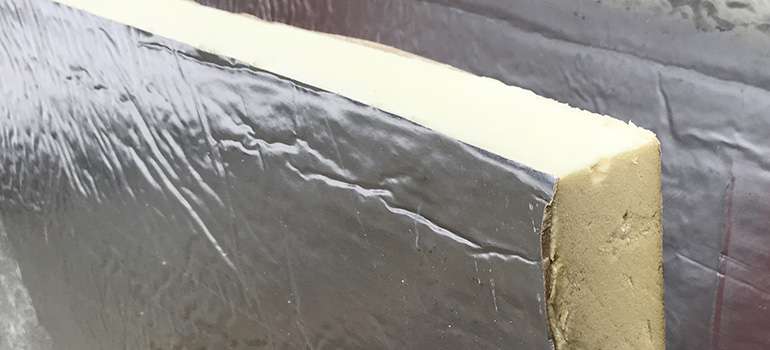
The news of Polyiso's R value petering out when you need it most still hasn't permeated entirely through the building industry, so you still see it being installed occasionally on the exterior of walls in cold climates. It won't offer nearly the thermal protection you think it will in the dead of winter, and it may cause moisture damage due to its lack of permeability.
Polyiso insulation boards are the most widely used low slope, above-deck commercial roofing insulation. As a versatile choice for commercial roofing applications, polyiso is designed to be part of any modified bitumen, built-up, or single-ply roofing system. Polyiso products feature a facer for high strength and excellent absorption for both hot mopping and adhesive attachment methods. The product also is designed to perform well with mechanical fasteners, possibly under Green Roof membranes.
Polyiso Foam Panel Insulation Conclusion: In real terms, using polyiso foam insulation panels is probably a poor choice if your winter temperatures dip below 50°F or 10°C. To put that statement into perspective, a wall or roof assembly in Chicago was tested for the whole of December then averaged out. The first assembly using 2" Polyisocyanurate foam panels was compared to the same assembly using 2" of EPS foam and was found to be losing 30% more heat in this study (see below)!
XPS - Extruded Polystyrene Foam Panels - The blue, pink or green ones (eg. Styrofoam):
XPS is Rated at R5 per inch, but it will off-gas and lose some insulation performance over time - especially below-grade and when tested in real-world applications. Above grade XPS foam acts as a vapour retarder (and becomes even less moisture permeable the thicker it is - 1 inch is about 1 perm, 2 inches about .5 perms); when taped it can act as an air barrier; the manufacturers and standardized testing state that it does not absorb moisture, nor is it affected adversely by it. However, with some of the EcoHome team having real world experience to the contrary, we "dug-deeper" and found that many contractors have also noticed potential issues with XPS foam boards retaining moisture, backed up by reports like this citing a large source of correlated testing and which would lead us to conclude that XPS rigid insulation panels should be avoided for below-grade applications like basement insulation - which is the opposite of much of the information out there.
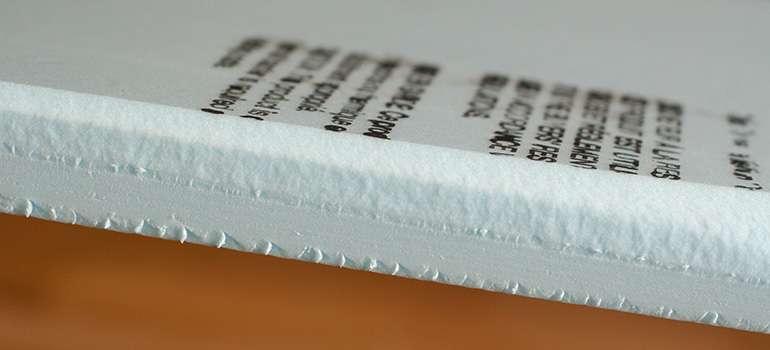
Note: 1 perm and 60 ng are U.S. and Canadian equivalent rates of permeability, below that rate of permeability classifies a material as a type II vapour retarder, suitable for residential construction.
Also, rather regrettably for traditionally produced XPS, the hydro fluorocarbons (HFCs) most commonly used as blowing agents are far more damaging to the climate than those used with other rigid foam insulation boards. Some manufacturers speak of a transition to more eco-friendly foam insulation blowing agents; that will be great news when it happens across the board! And credit where it's due, the "real" Styrofoam, as in the DOW Chemicals blue product, is now manufactured with HCFC blowing agents which have 94% less ozone depletion potential. As HFCs have a global warming potential (GWP) that is 1430 times worse than carbon, this really does demonstrate how important it is to choose rigid foam insulation boards very carefuly to reduce their environmental impact. All XPS panels are not equal!
EPS - Expanded Polystyrene Foam Insulation Boards:
Rated at R4 per inch; EPS foam insulation boards are more permeable to air and moisture than XPS, but it doesn't retain moisture to the same extent because of it's more closed cell structure and it's breathability which lets it dry out. Two inches of EPS foam board has a moisture permeability rate of between 60 and 75 ng (1 to1.25 perms), which is on the cusp of qualifying it as a type II vapour retarder, but on the more 'breathable' side of the scale which we would probably consider a good thing in most applications.
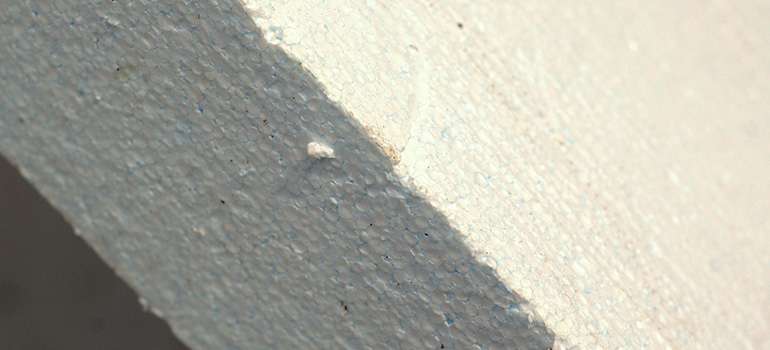
For reference sake, the traditional 6mil polyethylene vapour barrier has a permeability rating of 3.4 ng, making it about 18 times more vapour resistant than building codes allow.
The permeability of EPS can be handy at times if you want to add insulation to an existing wall assembly but are worried about trapping moisture, like retrofitting the exterior of buildings with additional insulation. Though to be absolutely sure you may be better with a mineral wool board which lets moisture pass right through - it all depends what moisture barriers are already in place or ar about to be installed.
The lower stated R value of EPS compared to XPS is in a way compensated for by having a higher R value per dollar, as it is somewhat cheaper. If you're not worried about losing an inch of space here or there, you'll get a higher R value with EPS for the same amount of money, albeit with a thicker wall, and this R-Value also stays pretty consistent over time - unlike XPS which tails off as it ages.
The performance of EPS may drop slightly when it's wet (reports I've seen indicate somewhere in the area of 10-15 %, so nothing too catastrophic), it will also dry out just as quickly as it got wet and return to its original performance. But there is nothing wrong with putting a little effort into keeping it dry if you can. The GWP of expanded polystyrene blowing agents is about 7 times worse than carbon, but that's a lot less than being 1430 times worse like standard XPS is. There is also the potential for a miniscule amount of off-gasing of some chemicals including potentially troublesome brominated fire-retardants from EPS foam products used in construction, but speculation as to whether or not this poses a significant risk to health doesn't seem to be based on any hard facts or testing. We'd be really interested to find any verifiable sources for EPS chemical off-gassing testing - if you find any please post them to the comments section below - as we are starting to think that EPS foam may arguably be the most Eco-Friendly insulation and this may sway our thinking against it.
Additional considerations with Polyisocyanurate:
Polyisocyanurate foam insulation panels come with a layer of foil on each side to keep the gases in, so there is the potential to solve a bit of a growing problem in wall assembly durability. Foil is a vapour barrier and a very good one at that, it fact it stops even more moisture than the normal 6 mil polyethylene normally used. So if you use it on the interior of a high performance stud wall design, you won't need to add an additional vapour barrier.
Here is the fun part - Since there is foil on either side of the panel, you end up with a harmless second vapour barrier, which is usually heresy in building design. But this can help in summer months when there is a risk of the vapour drive reversing due to air conditioning during hot humid weather. Any inward-bound moisture would be stopped at that inner layer of foil, which will be warmer than the foil on the other side, so you reduce your risk of summertime condensation.
That foil is the reason it can be problematic on the exterior, as you would be adding an exterior vapour barrier where you likely don't want one.
On the good news side, the GWP of blowing agents in Polyiso is similar to those in EPS, and in the right circumstances its R value is significantly higher, which deservedly or not helped earn it the reputation of being the 'greenest' foam. It can be a great choice when kept above freezing and away from moisture - so above grade for sure, and it makes a great interior thermal break when it's kept a bit warmer by batt insulation in stud cavities.
Being petroleum based should not result in foam being condemned by green builders on principle alone; it should be looked at in perspective. There are other great types of insulated sheathing (mineral wool, wood fiber and fiberglass to name three) and each will have their own benefits, drawbacks, carbon footprint and embodied energy through manufacturing, so even the greenest of the green will have some measurable impact. It takes energy to save energy, and manufacturing insulation is arguably one of the more noble things we currently do with fossil fuels. If you really want to go into depth about the tested performance values of Polyiso Foam panels in hot and cold clinates compared to EPS and XPS foam Insulation panels - see the article from Building Science Corporation here
An Alternative to Foam: Mineral wool / Rock wool rigid insulation panels:
The only rigid board insulation that is not a petroleum-based foam product shown in the main photo above is the brown one, which is mineral wool. It is a recycled product made with the stone dust from industrial blast furnaces.
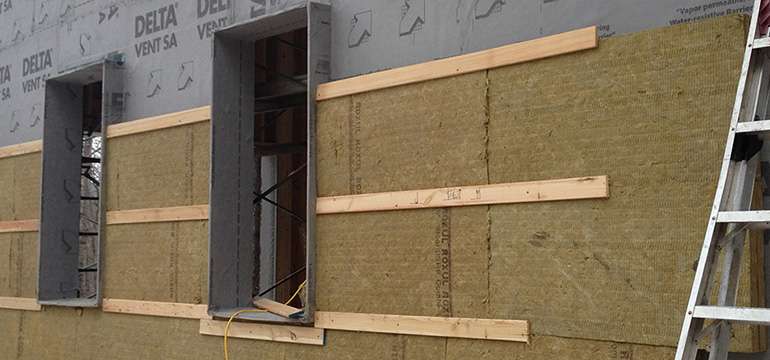
Like any particulate, it is best not to inhale the fibers while installing rock wool insulation board, so like any batt insulation we recommend using eye protection and a mask, not to mention gloves to prevent skin irritation. As an insulation it is non-toxic, and unlike foam products there are no blowing agents that will off-gas into your home. That means it can lead to cleaner indoor air quality, and the R value will never change, whereas foam products will deteriorate over time as the gases escape.
Mineral wool is rated at about R 4, it is unharmed by moisture, it is not a vapour barrier at any thickness, nor is it an air barrier. It also provides better soundproofing, and being made with stone, it is fireproof.
Not being affected by moisture makes it is a great choice for retro-fitting insulation when finishing basement, either interior or exterior. It is also something of a fool proof exterior board insulation when renovating, as it will not trap moisture from the interior inside the wall.
In batt form is it a common alternative to fiberglass for its higher R value, and easier installation (at least for doing a good job) It does however cost more than fiberglass per batt.
In conclusion - Which rigid insulation panel is best?:
Our personal overall preference due to its recycled content and versatile applications is probably mineral wool, but as for the petroleum plastic rigid foam insulation products - polyisocyanurate gets top marks for being 'eco' if you are in a warmer climate and can handle its moody disposition. EPS foam is versatile, great for below-grade applications and in the middle ground for performance, financial and ecological cost, and whilst XPS foam is a top performer on paper it comes with some unfortunate environmental baggage for which we'd probably rate it in last place. As soon as XPS completes its transition to less harmful blowing agents, I'm sure it will be welcomed into the green building community for above-grade applications.
For Additional Information on Insulation & Building High-Performance Walls:
Be sure to read the EcoHome Guide to High Performance wall construction here
And watch the Video Guide to high performance wall construction and insulation here


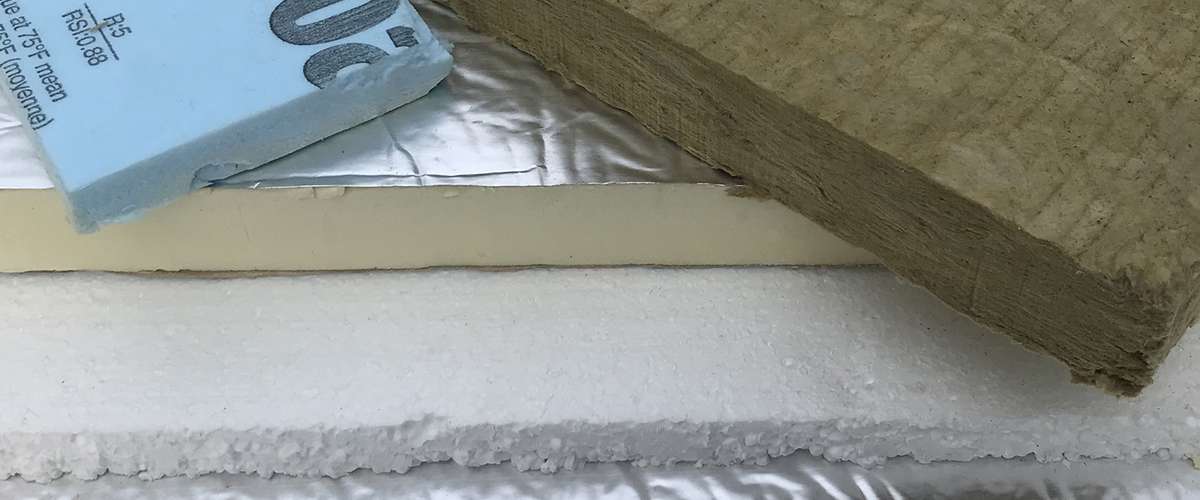













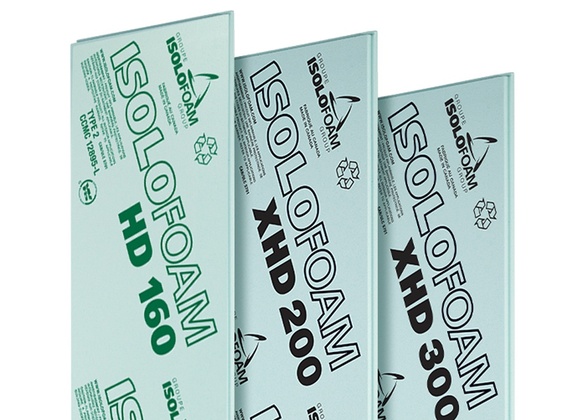
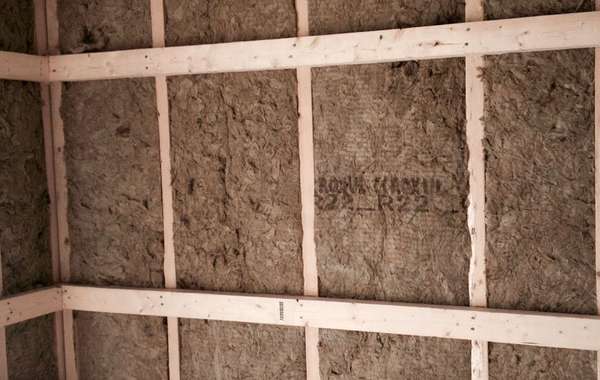
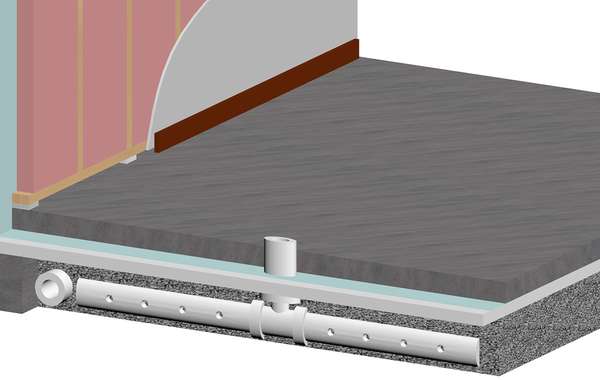
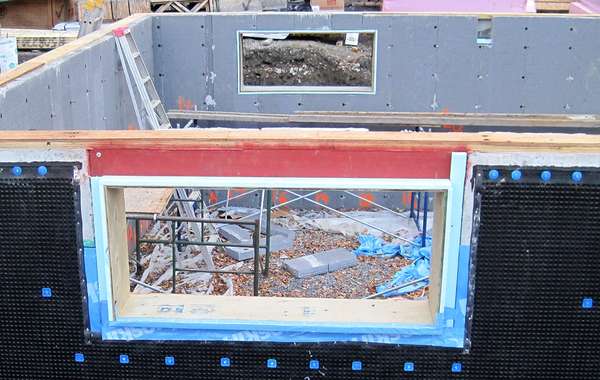
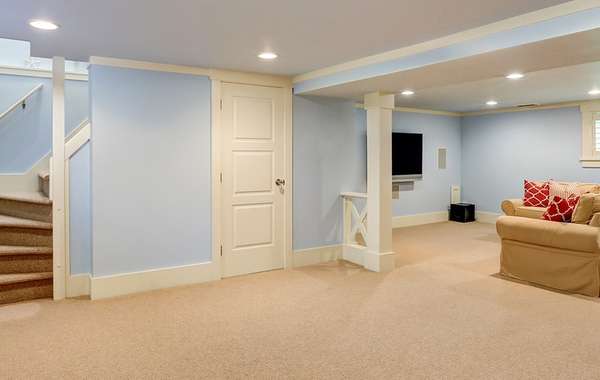
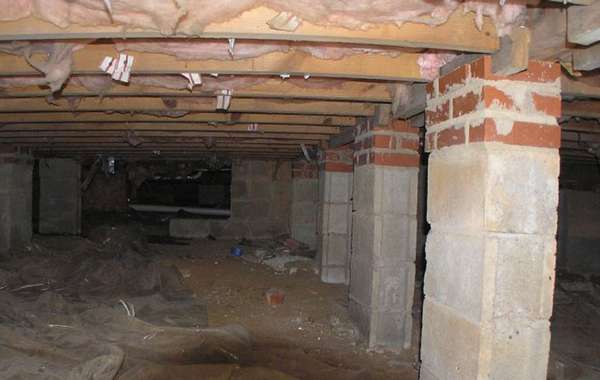
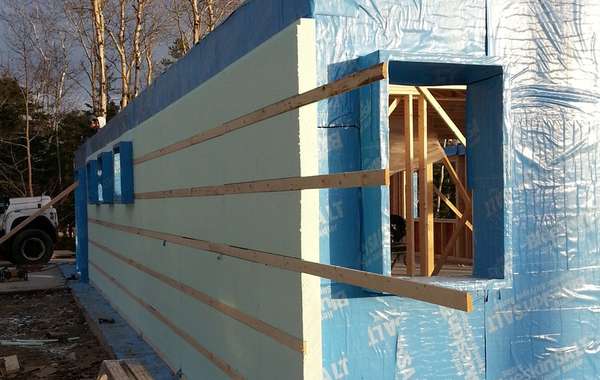
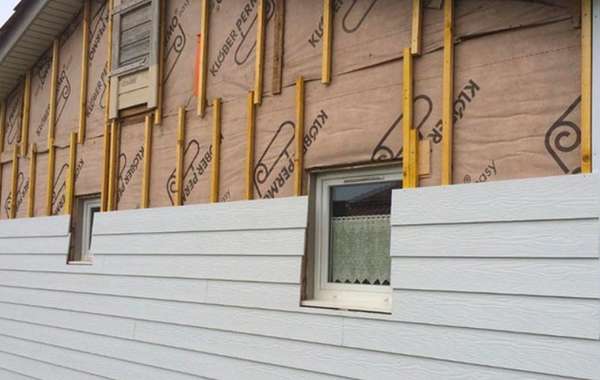
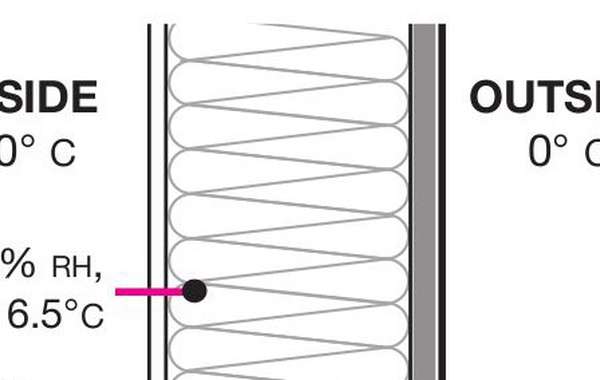
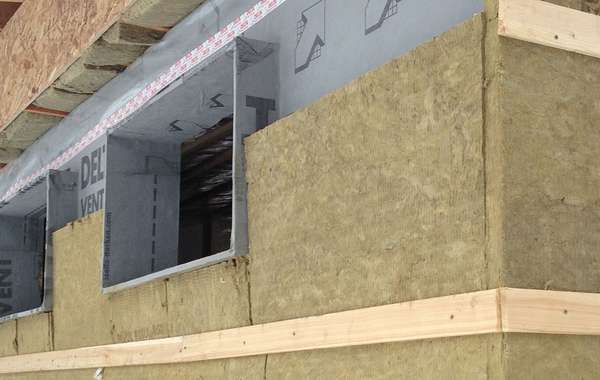
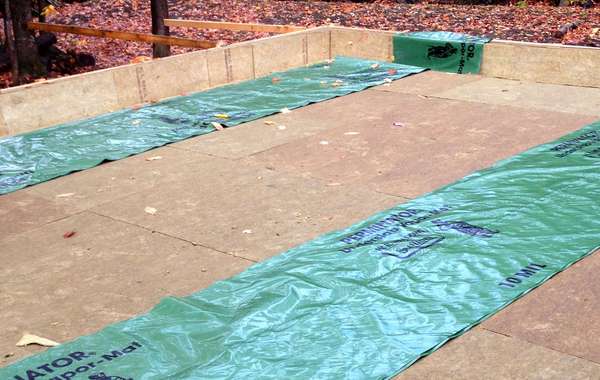

The big advantage of PIR is that it doesn't burn. With EPS or XPS, once it starts burning, the whole thing is going up. Industrial sites are moving away from EPS panels for that reason.
Are fire retardants added to polyiso, and if so do they off-gas? I'm thinking of using it on a roof deck where there is venting at a headwall with windows above.
Yes, all building materials have to have some sort of margin for fire safety, so polyiso would have fire retardants, for good or bad.
Mineral wood would have none, and it also may be better suited to the application of a roof deck. As mentioned above, the performance of polyiso drops when it's cold, for that reason we would recommend it being just a component of a wall assembly, one where it could be kept warm, as in having more insulation on the exterior of it.
Thank you for your posts, honesty and integrity. We need helpful information that is true and capable of assisting all of us to be able to build better and safely. Really appreciate it!
a couple of corrections might help here. Mineral wool has Formaldehyde, while other building materials like OSB, Polyiso, XPS, etc. all have fire treatment. the offgasing from these is like the offgasing from formaldehyde, well within any health regulations, no Polyiso wont be a problem.
The cold temp comment is a bit off. the reality is that the temperature which is mentioned should be qualfied as the mean temperature between hot side and cold side of an insulation product, so when it is 0 Deg outside, and the inside temp is 70deg, the means you evaluate insulation thermal R value is 35 deg. Polyiso experience almost no drift in R value in this scenario. those that explain it with just outside temp are misleading you. Polyiso actually increases in thermal resistance as it goes from 75 mean to 40deg mean, then starts to drop off after that. So, outside temps have to reach -30deg or more to really see a reduction in thermal values.
@Watt - That's an over simplistic statement about the fire performance of PIR, EPS and XPS. Representing the EPS industry for more than 20 years, I've not heard that one! I suggest a more scientific reference point such as an ICC evaluation report that includes the proper fire testing for the intended application.
Wasn't Grenfell Tower clad in PIR (Polyisocyanurate)? That cladding seemed to be burning very well indeed, unfortunately. It looks like the flammable cladding at Grenfell was the main reason that the fire spread so quickly & engulfed the building. It's hard to believe that building industry professionals were paid good money to wrap a tower block in flammable plastic.
Grenfell is still in litigation, but from what I know, it was an improper combination of polyiso and a non-fire-rated ACM panel that was not approved by the code officials. But still allowed to be installed as code officials were not present to catch the error. Whether or not the manufacturers and contractors did this knowingly will be the sticking point of culpability and blame.
Either way, polyiso has been tested in over 100 different configurations for NFPA 285 compliance and can be used with a fire rated core ACM panel.
Here is a testing report from the industry leading polyiso manufacturer if you want further data.
https://www.hunterpanels.com/docman-categories/technical-documents-wall-xci/baw-sheets/baw-2018-cg/1673-concrete-masonry-wall/file
No, polyiso does not burn & is the best fire resistance out of the 3 types. Grenfell cladding does not seem to have an element on each floor to compartmentalize the fire.
Actually, British code creates a 2-hour fire wall on all six sides of each unit, which completely compartmentalizes individual units from its neighbor. This code consideration eliminates the requirement or inclusion of sprinkler systems.
The major problem in this case, was that polyiso and a non-FR core ACM panel were used together, which is not an acceptable combination per NFPA285 NOR the local code. On top of that, the ACM cladding was created to emulate columns with large voids, and created a chimney effect. Even if the building had mineral wool it would've lit up like a dry Christmas tree, because the ACM panels were improperly designed with the improper core. Fire rushed through building and blasted through the weakest area, the windows and engulfed each unit from the outside.
I think you need to do some more reading. Grenfell Tower was clad in PIR & it most definitely burned, despite the predictions of "experts" such as yourself. There may well have been additional problems such as you suggest, but the fact remains that wrapping a concrete tower block in flammable plastic turned a safe (if ugly) building into a death trap. Who in their right mind would fail to see the dangers of wrapping a building in flammable poly-anything? The building industry has blood on it's hands - it collectively let us all down.
And the biggest culprits are folk such as Watt Hertz who blandly assured us that PIR "doesn't burn". People believed them - but it was a lie - it DOES burn.
As a result of that, around 100 people died. Some of them may have died from cyanide poisoning from the gases given off by Polyisocyanurate as it burned. We weren't warned about that by the industry "experts" either, were we?
Shameful.
Mike, have you seen the fire testing that the UK did comparing similar assemblies with Polyiso vs. mineral wool. when you have flamable cladding, the end result cant be distinguished, they both would fail. it was the cladding that spread the fire, not the polyiso. pictures of fully burned cladding areas show polyiso still with its original color, just chared on the surface. almost all cladding type assemblies will pass NFPA285 (a proven barometer for fire safety for many, many years) with polyiso behind them.
It is unfortunate that some people say it wont burn, heck even metals can burn. imagine building with wood?! buildings have all kinds of combustibles, from air barriers, to claddings, vynil, carpet, furniture, electical equipment,............ on and on. the point of NFPA is to provide guidance on safe time to evacuate, not to prevent any combustion, that is impossible at this point in time for all elements. dont pick on one, fire safety is about the entire structure.
Here you go - this might help to explain what happened. This is the PIR cladding burning at Grenfell Tower. It's pretty clear that the plastic cladding is burning with great enthusiasm, isn't it?
http://www.bbc.co.uk/news/u...
not you or I are fire experts enought to conclude what is burning, certainly not one thing. thats alarmist at work here. inside is burning, cladding is burning, probably other elements of the facade, windows, window treatments and all the combustibles inside. why are you picking so much on Polyiso, not nice, be factual
Hey Mike, I just read thru that article and it says the insulation in the cladding panels was poly-ethylene, not poly-isocyanurate.
Now, I've never been one to take the word of an article found on any website, ever, without checking the sources, but as far as I can tell, its called "Reynobond PE" and the PE stands for poly-ethylene. Quite different.
Also, something to consider in that Grenfell fire is the product's use in a high-rise. Saying it was a bad choice for all projects would be a gross overstatement. If you look through the graphics in that article you posted, it shows the fire started on the fourth floor but didn't really start blazing badly until it was up several storeys. The nature of fire!
There seems to be contradictory information about the material used. This article says that PIR was used.
http://www.telegraph.co.uk/...
However other reports say that it was Reynobond PE, but even if that is true, it's surely obvious to anyone that it wasn't a safe material with which to wrap a tower block? I'm not interested in whether it's a good choice for a low rise block, that's irrelevant
I have also seen on TV that the substance used was PIR, though with so much information around it's a a job to remember where we heard what. But one fact is indisputable - it burned ferociously. And it apparently passed all the "tests" that were required.
Anything that begins with "poly" is a plastic, right? And all plastics will burn, though some more readily than others. It's never going to be safe to wrap a tower block in plastic - simple as that. It needs to be as fire resistant as asbestos or concrete, otherwise it simply makes the building a much greater fire risk than it was before, albeit a little prettier - till it catches fire.
Whether the material used was PIR or PE, it was totally inappropriate & caused a small fire to engulf the block. Surely the simple question we need to be asking is this;
"Who in their right minds could have ever thought that wrapping concrete blocks in flammable plastic of any kind was a good idea?"
Never mind whether or not this "good idea" was a good use of millions of pounds of public money!
Polyiso was the continuous insulation used behind the cladding. the cladding is a composite made up of aluminm skinds and polyethelyne core. no Polyiso in the cladding
Mike54321: Grenffell was clad in an inner layer of PIR, and air gap which served as a rain screen, and an outer layer of polyetheline (recycled soda bottles?) sandwiched between layers of foil. It was the outer layer that burned so ferociously, with the air gap creating a chimney effect to feed it. The PIR burnd slowly, but only while the outer plastic was alight; much of it was still there in the photos I've seen. On the possible down side, some of the survivors were treated for cyanide poisoning and there was some speculation that the PIR might have contributed to that. Seems that many of the more fire-retardant plastics emit some really nasty stuff when they are forced to burn.
Since Polyisocyanurates and polystyrene come from petroleum, it makes sense that they will burn. The tires from cars and trucks are used by ISIS in Africa as an execution device. ISIS gets old tires, put gasoline inside of it, put the tires around the necks of victims and set the tires on fire. After the gasoline burns away, the tires themselves burn extremely hot, and they poor victims become charcoal.
What has ISIS got to do with the negligence of the so called "building professionals" who recommended that Grenfell Tower would be a better place if it was wrapped in plastic? And then charged the public several million pounds for doing so?
Shouldn't the so called "building professionals" who recommended wrapping Grenfell in plastic have known this? Aren't risk assessments supposed to be carried out?
Excellent information! Question: I will be insulating the inside front tack/dressing room of my aluminum bumper pull horse trailer. Do you recommend the EPS Polystyrene? or the polyisocyanurate? I live in a cold climate so keeping the space warm is important. Also wondering if I should use a construction adhesive to adhere the insulation to the outside walls.
Hi Judi
I wouldn't go with the polyiso since it doesn't work as well when its cold. I'd use EPS, or even XPS. I don't recommend XPS often as you probably read above, but it has a higher R value per inch and you will clearly have limited space and want to insulate it as best as you can in the space you have. And yes, you could attach it with an adhesive, just make sure to choose one that suitable for the application, not all of them are, so read the tube or ask for advice when you're in a building supply store.
And, another option you may want to consider would be spray foam. Demimec has switched blowing agents so it is now far less polluting, and given that it is for a trailer, you may be able to get it done cheaper by taking it to an installer rather than them having to come to you.
I have the same question, but why not using rock wool instead? isn't it better in any way?
Hi Elisa,
That's a good suggestion, but I thought a problem with Rockwool in this situation is that it would be difficult to attach it with an adhesive, so Judy would need to come up with some other method of fastening it; that might be difficult to do with the thin walls of a horse trailer and not have the ends of screws poking out the other side.
We do like Rockwool for a number of reasons (it's made with recycled stone dust, it's not harmed by moisture, etc), but in this case it doesn't seem like the best option. But I like that you thought of that, thanks!
Funny, spreay foam and Polyiso are almost the same in chemical composition, R Value and thermal drift. Polyiso is basically spray foam laid down in a controlled environment and shaped to a perfect board.
use polyiso, it has higher R value per inch, so you would use less thickness for same results and the mean temperature between outside of the trailer and inside wont be enough to affect polyiso R value in a significant way. and if it does on the coldest day, it will still be higher than XPS.
What about graphite polystyrene (GPS)?
you state that the board has foil on either side. which way do you install the foil? facing interior or exterior??
Wait... someone just suggested that you may have meant to say . foil is on EACH side
Thanks
Hi Rose,
Yep, I meant to say EACH side! I've gone back and fixed it, thanks :)
It's worth mentioning that Mineral Wool's Global Warming Potential is higher than that of either EPS or Polyiso. It may be a good use of a waste product (slag, glass, ceramic) but its production process is seriously energy-intensive.
Hi Sarah, You are correct, it is worth a mention. Thanks for pointing that out!
Good afternoon, I am writing from Montreal Quebec, we have recently solicited a quote to replace a 30,000 square foot steel deck roof on a commercial building. The roofers have recommended using 2 1/2 inch ISO insulation on the roof. Not knowing what this product was I researched it and fell upon your website. I am now very skeptical about using this product on the roof where our temperatures are well below 15 degrees C in the winter. Called 2 roofing supply stores and both seem to say it is the main roofing insulation for this type of roof. They had no idea of the pitfalls of ISO when exposed to the cold. Since this material would be installed outside on the steel deck, separated only by a vapour barrier I was really questioning its efficiency for the Montreal Climate??? I'm also concerned with the weight on the roof during the winter months (snow, rain and ice). How will this affect the product. Would it crush the gases out prematurely? What other type of instulation could be used instead of the ISO?
Thanks Gennaro
Hi Gennaro,
Polyisocyanurate on a roof will work as an insulation, just not as well as most people may think. And it isn't a great surprise that an installer hadn't heard that the performance falls off in colder weather since manufacturers present their 'best' results from testing, and in warm conditions it does offer R6-R6.5, so that is laregely the 'accepted' R value of polyiso in the industry.
Some builders that are aware of the performance concerns have begun including a final layer of rockwool on top of the polyiso to keep it warmer so that it continues to offer up around R6 per inch.
As for how much to install, we have come to realize that for the most part, regional building codes are about half what we ourselves would do. So our recommendation would be to find out what is specified in the regional Building Code (which is a bare minimum) and probably double it.
So how much (?) rockwool u would install on top of the the iso to maintain/support its R value at -20F. ??? 1'? 2"? There is nothing in the building code as to how much Rock wool to install over Iso .... Thx Z
Hello all. I thought I was confused before, I have less of an idea of what to do now. I have a seasonal home in VT. In winter, the house is unheated. Always find moisture in the basement when we arrive in June. Was going to insulate the basement walls with 2" Polyiso until I read this blog. Can anyone recommend how to insulate a concrete block basement wall to alleviate the moisture problem? The ceiling is uninsulated. Excavating around the perimeter may not be possible due to concrete platforms and stairs around 1/3 or more of the perimeter. It sometimes gets as cold as -20 here and can be below 0 for weeks. What should I do?
Ken, polyiso will absorb less than 0.1% water.
Having the insulation inside the home will maintain it's true R-value. The information provided regarding r-value loss is incredibly incorrect and misleading.
Hi Bobby
This article is based on findings from the building science community and we have no motivation to provide anything but accurate information. Can you say the same?
Given your fierce defense of polyiso and your ability to rhyme off numbers, we are wondering, and please be forthcoming - do you profit in anyway from the sale of polyisocyanurate insulation?
Are you employed by a company called Hunter that provides polyiso panels?
We look forward to seeing documentation to back up this myriad of claims (independent third party documentation, not from a company you may work for), as well as an honest answer as to any affiliation you may have with the industry that would help us understand why your nose is so far out of joint. Thanks.
...so at the end of the day, which of the options (iso, XPS, EPS, styrofoam) is best for insulating the inside of a basement wall (concrete block)? Thanks for the info, very helpful post, but still confused which to go with.
If we had to answer in a word without the variables and conditions, that would be EPS foam insulation for ecological footprint, cost and performance.
One element of exterior foam insulations (both above and below grade) that I am really struggling to evaluate is insect damage. We live on Vancouver Island and our current house has exterior foam above the roof deck. This foam layer is a very desireable home for carpenter ants, who make nests in it and then end up in other parts of the house. As we design a new house for the same property, I am really striuggling to determine which foam or mineral wool insulations are least likely to pose a problem like this. We will be insulating below the walkout basement slab and outside the basement foundation walls, and possibly on the outside of the above ground framing. Any ideas, knowledge or advice? Dean
I also live on Vancouve island, what did you end up doing ? Thx Z
Your assertion that polyiso is susceptible to a massive R-value reduction is PATENTLY FALSE in a wall assembly. The study you are referring to is based on MEAN temperature. So, as you state, polyiso will be reduced by 25% to R-4.9/inch (still better than mineral wool, cellulose or fiberglass). That said, in order to get the wall cavity to the temperature required to have this reduction, (which is NOT 50°F, rather closer to 20°F) you would need an interior conditioned space of 70°F and an exterior temp of -30°F!
You really should either revise this post of just remove it completely as it is absolutely incorrect. Not to mention that it has been shown through use of thermal modeling that 2.5" (R-15.9) of Polyiso up to Climate zone 6, will exceed code standards based on U-factor performance. That doesn't sound like low temperatures have anywhere close to the impact you implicate.
I'm enjoying the information! Please keep it comming. & Please describe the wall assembly. Thx Z
One thing I didn't see addressed in your article is the effect of age on R-value. This article says polyisocyanurate loses 75% of its r value in 5 years, and nearly that loss in about two years according to the graph they included. Having decades of experience with our own cold storage warehouse insulated with spray foam polyurethane, this sounds extremely exaggerated and inaccurate. Thoughts?
Hi Sam,
The effect you mention is known as 'thermal drift', and yes it is a real thing, but the drop in R value per inch of polyiso is not even remotely close to that level. That would mean that it was performing at a level under R2 per inch, and there is no evidence to support that at all. The NRCA ( National Roofing Contractor’s Association) recommends calculating the R value of polyisocyanurate insulation at R-5.6 per inch when designing for warm climates and R-5.0 per inch when designing for cold climates.
Thanks Mike for your reply. I either forgot to include the link to the article or your website does not allow it. Just in case I'll post it here again. The graph I referenced is on page 3 of the PDF.
Hi Sam, I did remove the link since we don't allow outbound links to private companies in the comments sections, and, particularly not to pages full of nonsense like that one :)
That company makes their walk-in coolers with a certain type of insulation and so they clearly want to promote their own products. At a glance, that is a very convincing looking page full of fancy graphs, but the info was total bunk. Niether Polyiso nor spray polyurethane loses 75 percent of its insulation value after 5 years, that's total rubbish. When a company makes completely fabricated claims, it's reason enough to close the window and do a fresh search.
They also spoke about moisture penetration into polyiso insulation killing the R value, but polyiso has a foil membrane on the exterior to keep the gases in and metal is about the most vapor-impermeable membrane you'll find in building products, it is even less permeable to moisture than a 6-mil poly vapor barrier, as you can see ont his page showing a graph of the permeability rating of vapor barriers.
All PolyIso is not foil faced. In roofing they also use fiberglass and organic faced both ared heavely perferated, so off gassing and Permability and much higher. Thx Z
Hi Mike, I could use some guidance on a building situation that we have created. We needed extra storage for our furniture and belongings while embarking on a large house renovation. We have a large old dairy barn. So we built a large “box”/room in the middle of the barn to serve as a storage unit. We used plywood to construct the box, installed 2 windows and conditioned the space with a mini split. Next we installed XPS on the interior walls. Our plan was to leave the walls as is after this. However, after doing some research and reading on this site, I am now concerned with the off gassing that is occurring. Fortunately, we are not living in the space but I am concerned about our furniture absorbing the off gassed chemicals. The room is supposed to be “temporary” so we did not plan on putting drywall up. I was considering covering the XPS with plastic but did not want to cause a moisture issue. Do you have any suggestions? Thanks!
Hi Belinda, you have nothing at all to worry about. Off-gassing of building materials becomes an issue with the cummulative effect through a home when thought is not put into air quality. In such a case, it can turn into a toxic stew of formaldehyde and tons of other chemicals from sealants and adhesives, paints, floors finishes, cabinetry, countertops, and yes, sometimes insulation. But I persoanally would have no concern whatsover storing furniture in a room insulated with XPS. The off-gasing is the release from materials into the air, which no doubt wil be changed regularly. Rest easy, your belongings are fine!
Thanks Mike! I appreciate your opinion on the matter. My husband also sends his appreciation especially since now he doesn’t have to remove the insulation!
Hey Mike thanks for putting this article together, Great info. I do have a question for you. Im converting a large van into and adventure rig to explore North America and beyond and im looking to insulate. Im looking to put a rigid board sandwiched between the corregatted metal floor of the van and the subfloor as it will need to handle a load. Ill be doing my best to keep a vapour barrier intact. Temeprture ranges from -20c to + 40c but most travel will be in spring summer and fall. I Will have a hydronic dry air furnace on cold nights and will have plenty of ventilzation in the heat. Any recommendations for this application? the walls and roof i have more flexibilty in what prodiucts i could use. Thanks again. cheers
Very good article, well put together and many interesting points! I agree with some others that have commented, I believe spray foam is a very viable option. It has some of the highest R-value out there, it lasts a long time, it's eco-friendly, and it can create a vapour barrier!
Hey Mike Great article I learned a lot but still not sure which product to use. My project is a small scale dehydration lumber kiln, max operating temp 160 deg. It is 2x4 construction with one 2" layer of foam board between the studs and another 2" foam board attached to the studs on the inside. It is then covered with 6 mil plastic and 1/2" cdx plywood and all joints taped and sealed and interior painted with alminum roof coating. Every attempt is made to keep water infiltration out or to a minimum however in a kiln moisture will eventually get into the walls. The two options I'm looking at are the Foil faced EPS or the Polyiso. Before researching the differences I purchased The EPS and am now having second thoughts. I could use this on another project if I had to but because of the price would really like to use it on the Kiln. My main concern is temperature will EPS have a problem at 160 deg.? Will the EPS become water logged over time? Other forums that deal with Kilns recommend using the Polyiso, but after reading your article if temp. is not a problem I'm thinking the ESP should work just fine. Hope I'm right but I have been wrong once before in my life.
Hi Wayne.
I'm not 100% clear on your wall assembly but don't need to be, I think I can still help you choose -
The foil would for sure be a perfect vapor barrier, but polyiso isn't the best for handling moisture. Mineral wool /Rockwool is completely unharmed by moisture, so in situations where there may be water or humidity concerns it can be a good failsafe choice. Foil is great, but a taped poly membrane would do the exact same thing. That way you could do Rockwool and have the vapor barrier like with the foil. And since mineral wool is a stone dust (and fireproof), high temperatures aren't a problem. And yes, when exposed to a lot of moisture or even bulk water, EPS can become saturated. Hope that helps!
Thanks for the excellent article.
I learned a lot... . Much appreciated.
2 questions I have -
If PIR r value drops 30% in cold temperatures, doesn't it still match or outperform it's competition in r value?
30% of 6 =1.8
So remainy r value = 4.2
A little higher for 6.5 foam.
Just wondering.
Second, I have been driven nuts by the itchy feeling from every insulation I've installed other than the blue recycle denim/cotton stuff.
Are either xps or eps irritant free? I have not tried them yet.
Thanks
Can you offer any comment on which insulation product would be most suitable for insulating, say, a potentially-leaky metal structure .... that is, a camper van? There is a lot of confusion and debate on the issue regarding the best approach for insulating camper vans... some of the items of debate include the use of vapour barriers, whether to use a moisture-management insulation like wool vs hydrophobic insulation like Thinsulate vs something that aims to stop moisture from passing through, like rigid foam boards (eg. polyiso). It would be great to get some professional opinions on this!
Hello.
Thank You for interesting read. First time i hear about this loss of insulating properties of PIR boards at low temperatures. Extremly usefull information. In the paragraph You have mentioned a December Chicago study - and refered us to "see below". Could You please refer me to this study?
Thank You in advance
Cheers Maciej
was that not debunked further up in this thread?
Hi ! Enjoyed your article but now more confused on what insulation would be best for my home. I have an 1820 farmhouse and am renovating the bedroom first floor ceiling. We took down the drop ceiling and want to refinish the ceiling and expose the beams. What type insulation is good for low off gassing and sound proofing and R value? The 2nd floor above is not heated. We were thinking using rigid insulation and then cover with Armstrong wood planks leaving beams exposed. We are concerned with VOCs, want to be green as possible and have good fire retardant and moisture prevention. Can you help with our insulation choice? Rigid would be easiest to install. Thanks!
Dawn
check out Rockboard 40/60, 60 & 80
Hi and thanks for the great article. I have a detached garage that is clad in corrugated metal. The metal has a lot of seems and penetrations so this not at all moisture or airtight like a traditional exterior of a house. I thought I'd use 1" of rigid foam insulation on the outward facing side of the stud cavity to create an air barrier and vapor retarder. (I'm filling the rest of the cavity with rock wool for sound deadening.) this is for a shop so it doesn't need to be house level insulated; rather I'm looking to "take the edge off" while working in the hot humid Virgi is summers and cool winters. Plus deaden the sound for my neighbors. In this case, would a Faced EPS products be better than XPS?
Thanks for this informative article. We are looking to reduce heat loss in our unfinished basement (1920s house) and considering having HFO sprayed directly onto the thick concrete basement walls. I am concerend about some of the cons of using spray foam. I was considering rockwool comfortboard (attached directly to the concrete walls) as an alternative, but not sure whether this could lead to moisture problems with moisture leaking through the concrete walls and being retained by the comfortboard. Should we use a poly moisture barrier between the concrete and comfortboard? We can get moisture in the spring and summer when humidity is high and run a dehumidifier during this time. We are not planning to frame the walls at all, so didn't want to combine with framing and batts. Would this be a viable alternative to using spray foam in this sitution? Would faced EPS be a better alternative that comfortboard? Thanks for any advice you can provide.
I need info on which insulation board for inside unfinished basement to protect from radon.
Hi Woody, there is no foam panel that specifically acts as a radon barrier. XPS is the most air tight, but for proper radon protection you're best to do a dedicated membrane. Here are our pages on how to remove radon gas from homes, look this over and if you can use more information then check on the discussion board for info on radon. And if you don't find all you need you are welcome to ask a new question about radon, just include details about the current state of your basement if its a reno (whats on the walls, floor, finished or not etc), and we will be happy to help.
Hi Mike, foamular is said to be a protection from radon. I've read a LOT about radon. Short of having a radon mitigation system installed, we're trying other ways. House was built in 2007. basement has fiberglass batting on walls, no studs, no framing on walls. We've used radon sealer on floor. It's dropped the radon from around 4.75 to around 3. We're going to be doing the walls next with the sealer. [it's just a lot of work for 2 older people] The basement is unfinished. Walls and floor are concrete. We ran a dehumidifier last summer, have only been here for one year. Had to empty quite regularly. so there is humidity down there. There is no moisture problem thru the walls, even though 3 walls have earth around them. it's a walkout basement. The east facing door and window are not framed in, eg not finished.
We're in virginia, temps don't usually get down to -10F in the winter. They can and have, but not every winter.
Thanks for the tip on foamular Woody, I hadn't seen that so I'll look into it. There are diffferent strategies that can have different levels of effectiveness, and which is easier and better can depend on what sort of interior finishing you currently have and how much you can invest in mitigation. There is an added challenge in doing it afterwards, the same as trying to improve an air barrier in renovation compared to new home construction. If its not an integrated system then you need to be very careful at the joints and junctions between materials, and between floors and walls. But it sounds like you have a handle on it.
You could also look in the radon mitigation products on the Ecohome green building products listing, and you can find radon mitigation specialist companies there was well.
I have a house project in south Texas (zone 9b) temp range extremes 17-115F. I have been investigating SIP construction including composite type using Polyiso. What is the lowest degradation value of polyiso per inch. In your opinion if this was your construction which would you use and why. Would there be any advantage to utilizing different products or methods on roof or exterior walls. There will be a continuous overhang of 10' on all sides and hip type roof is required. Thanks in advance for any help!